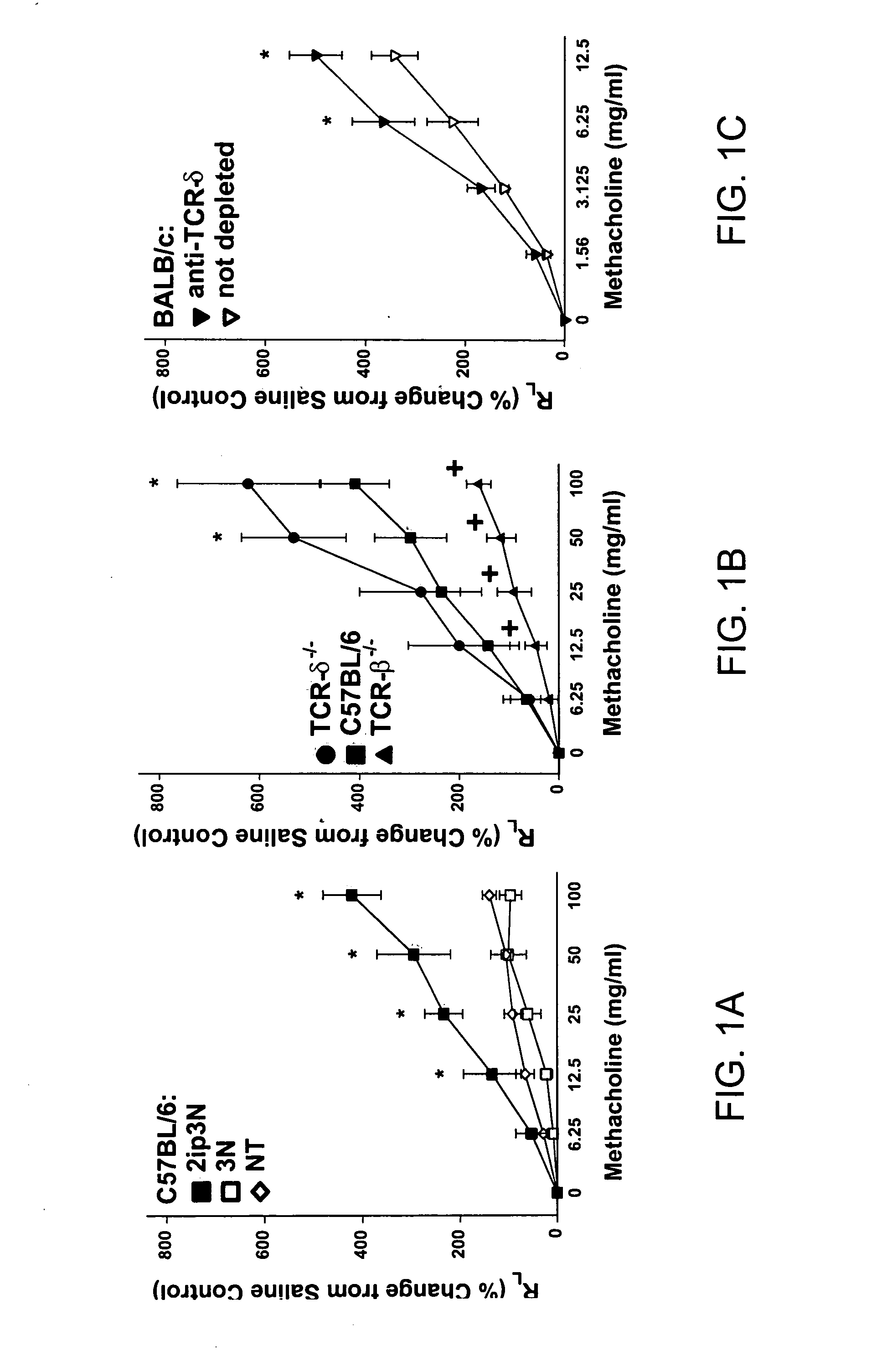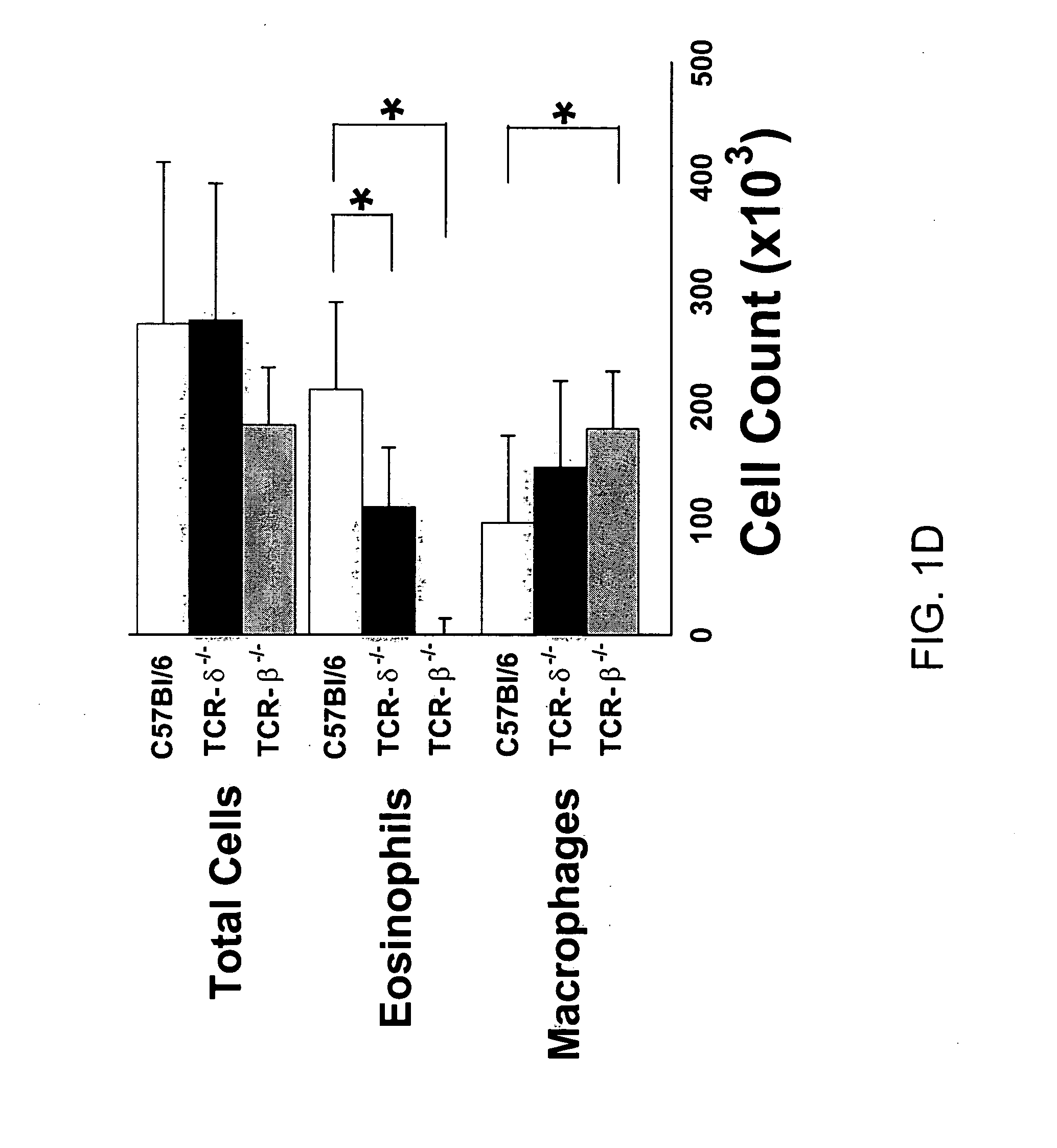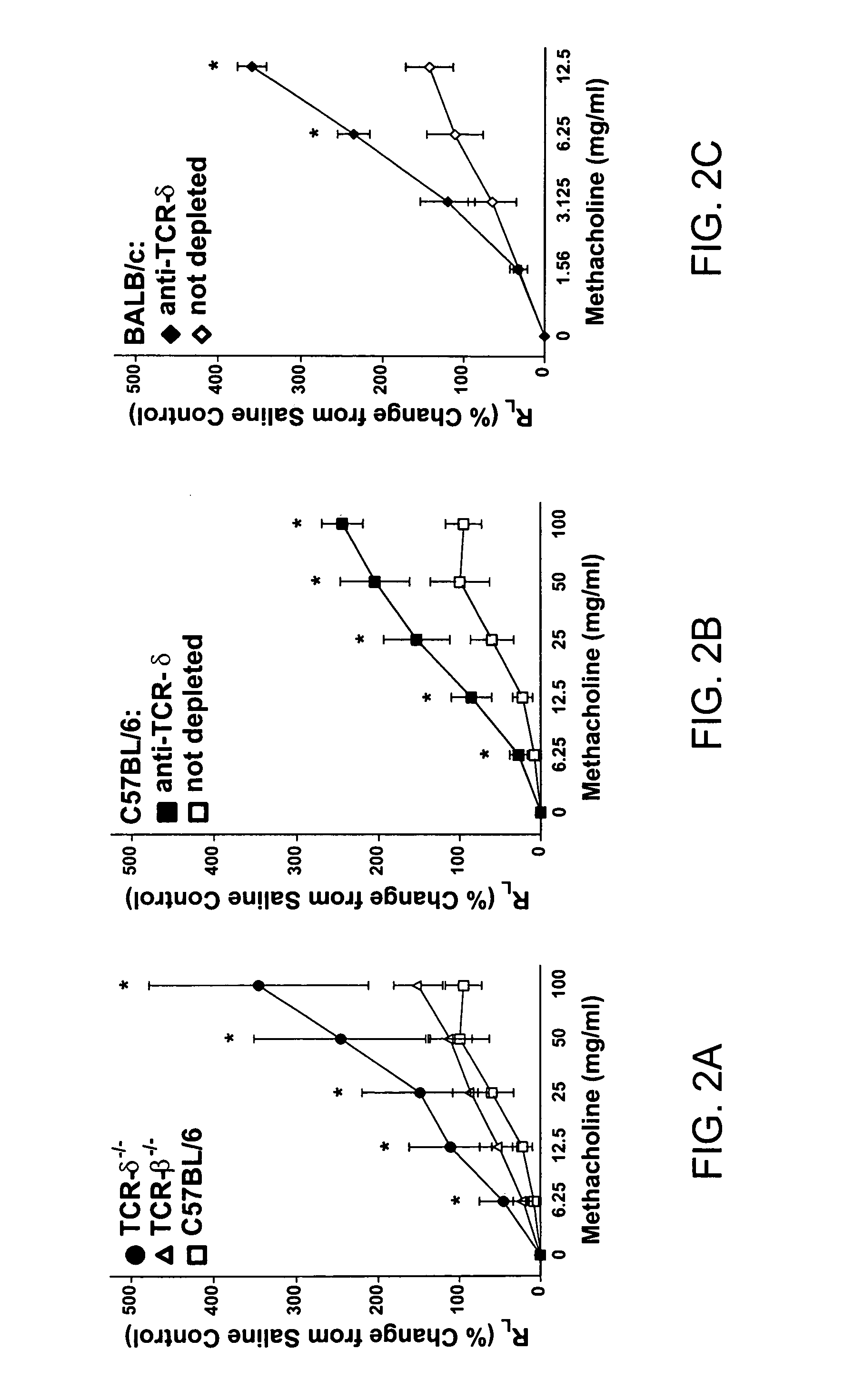Modulation of gamma delta T cells to regulate airway hyperresponsiveness
a hyperresponsiveness technology, applied in the field of gamma delta t cell modulation can solve the problems of affecting the function affecting the ability of gamma delta t cells to regulate airway hyperresponsiveness, so as to reduce airway methacholine responsiveness, and increase
- Summary
- Abstract
- Description
- Claims
- Application Information
AI Technical Summary
Benefits of technology
Problems solved by technology
Method used
Image
Examples
example 1
[0121] The following example demonstrates that airway reactivity is increased in the absence of γδ T cells.
[0122] The following materials and methods are used throughout the examples herein, as indicated.
[0123] Animals. The influence of γδ and αβ cells on airway hyperresponsiveness (AHR) was assessed in a murine model of allergen-induced, T cell-dependent asthma. For these experiments, BALB / c mice, C57BL / 6 mice, TCR-β− / − mice (mice deficient in αβ T cells and back-crossed onto C57BL / 6 genetic background), and TCR-δ− / − mice (mice deficient in γδ T cells and back-crossed onto C57BL / 6 genetic background) were purchased from The Jackson Laboratory (Bar Harbor, Me.), and cared for at National Jewish Medical and Research Center (Denver, Colo.) following guidelines for immunodeficient animals.
[0124] Sensitization and airway challenge. Mice (BALB / c, C5713L / 6, TCR-β− / − and TCR-δ− / −) were treated with hamster Ig (sham depletion) or with monoclonal antibody against TCR-8 or TCR-β and receiv...
example 2
[0136] The following example demonstrates that the effect of γδ T cells on airway hyperresponsiveness does not require systemic sensitization.
[0137] Since γδ T-cell deficiency was shown to influence AHR in allergen-sensitized and challenged mice (Example 1), it was next determined whether systemic sensitization with antigen was necessary for these effects to be shown. In this experiment, the effect γδ T cells on mice sensitize only through the airways was investigated, using the protocol described above (3N treatment).
[0138] Results are shown in FIGS. 2A-21. FIGS. 2A, 2C and 2G illustrate changes in airway resistance (RL); FIGS. 2B, 2D and 2F illustrate changes in dynamic compliance (C). FIGS. 2A and 2B show the effects of 3N treatment in C57BL / 6 (□), TCR-δ− / − (●) and TCR-β− / − (Δ) mice. FIGS. 2C and 2D show the effects of 3N treatment in sham-depleted (□) and γδ T cell-depleted (▪) C57BL / 6 mice. FIGS. 2E and 2F show the effects of 3N treatment in sham-depleted (⋄) and γδ T cell-de...
example 3
[0140] The following example demonstrates that γδ T-cell regulation of AHR is independent of αβ T cells.
[0141] To further elucidate the mechanism of the observed increase in AHR corresponding to γδ deficiency, the effect of γδ T-cell depletion on airway responsiveness in 3N-treated mice (see Example 1) was assessed in mice genetically deficient in αβ T cells, by injecting TCR-β− / − mice with antibodies agai-β− / − TCR-8 as described in Example 1, followed by evaluation of AHR as described in Example 1. The results of this experiment are shown in FIGS. 3A and 3B (sham-depleted (◯) and γδ T cell-depleted (⊙) CR-β− / − mice).
[0142] The reciprocal condition of αβ T-cell depletion in mice genetically deficient in γδ T cells was also assessed using an antibody against TCR-p in TCR-δ− / − mice, results shown in FIGS. 3C and 3D (sham-depleted (LI) and αβ T cell-depleted (E) TCR-β− / − mice). As a further control, T cell-deficient mice were treated with antibodies specific for the type of T cells t...
PUM
| Property | Measurement | Unit |
|---|---|---|
| concentration | aaaaa | aaaaa |
| concentration | aaaaa | aaaaa |
| concentration- | aaaaa | aaaaa |
Abstract
Description
Claims
Application Information
 Login to View More
Login to View More - R&D
- Intellectual Property
- Life Sciences
- Materials
- Tech Scout
- Unparalleled Data Quality
- Higher Quality Content
- 60% Fewer Hallucinations
Browse by: Latest US Patents, China's latest patents, Technical Efficacy Thesaurus, Application Domain, Technology Topic, Popular Technical Reports.
© 2025 PatSnap. All rights reserved.Legal|Privacy policy|Modern Slavery Act Transparency Statement|Sitemap|About US| Contact US: help@patsnap.com



